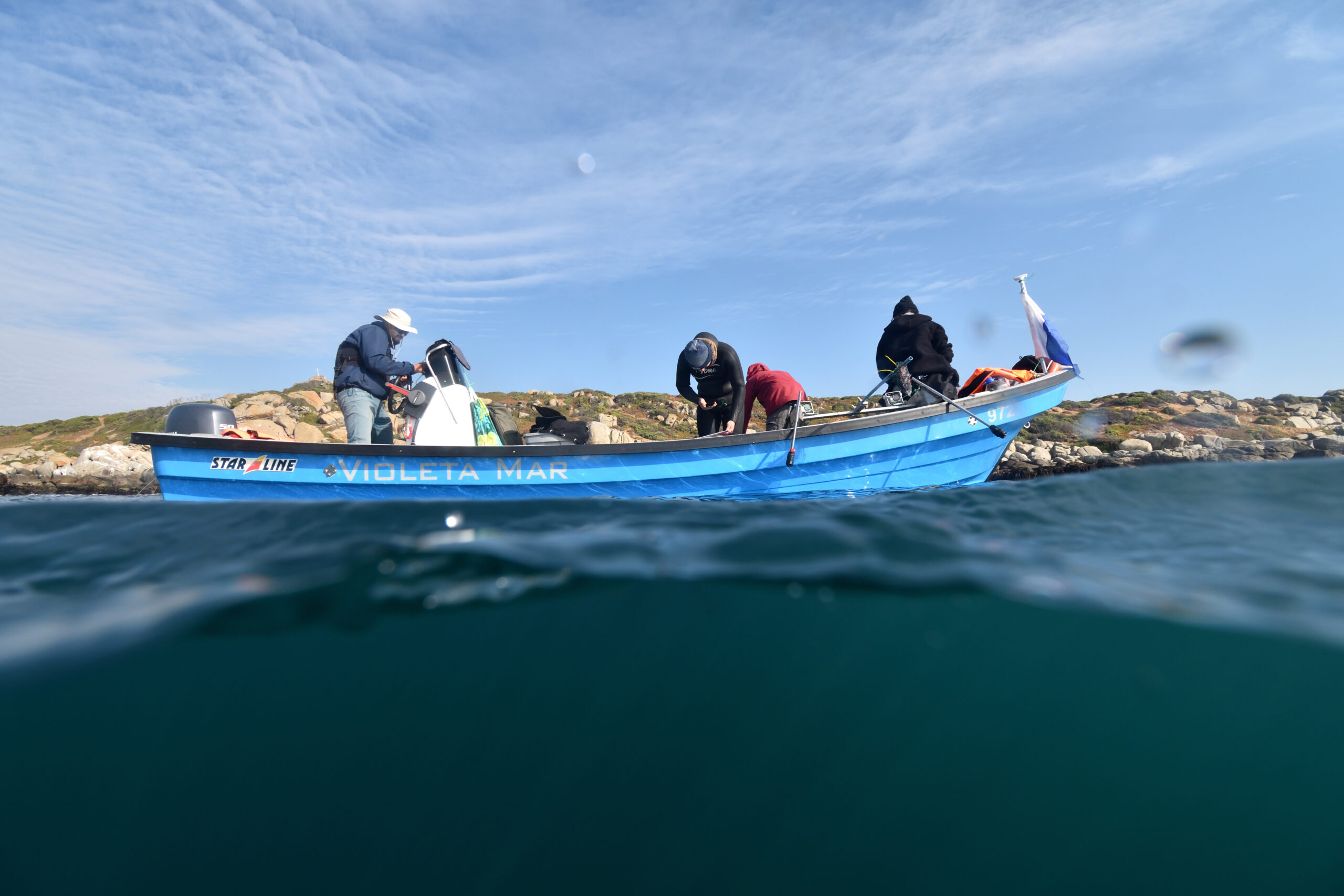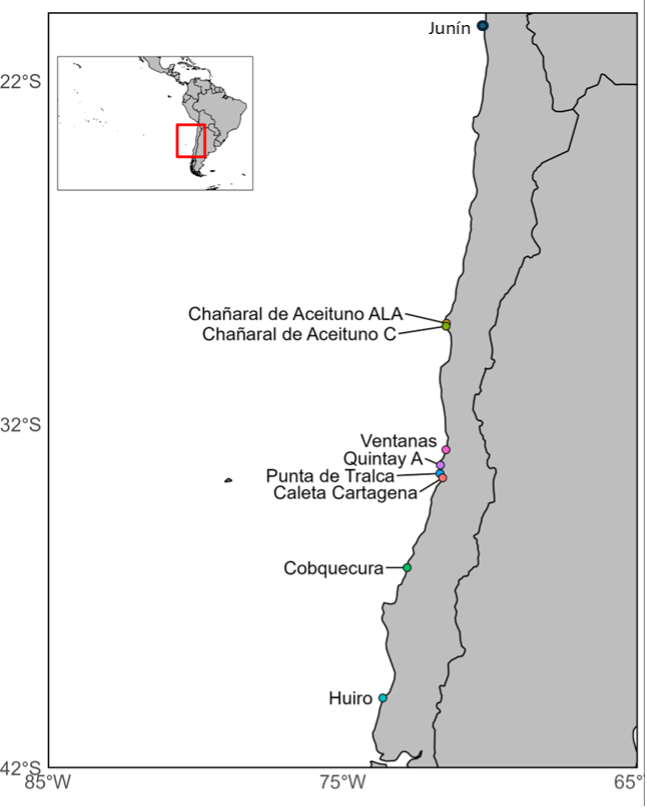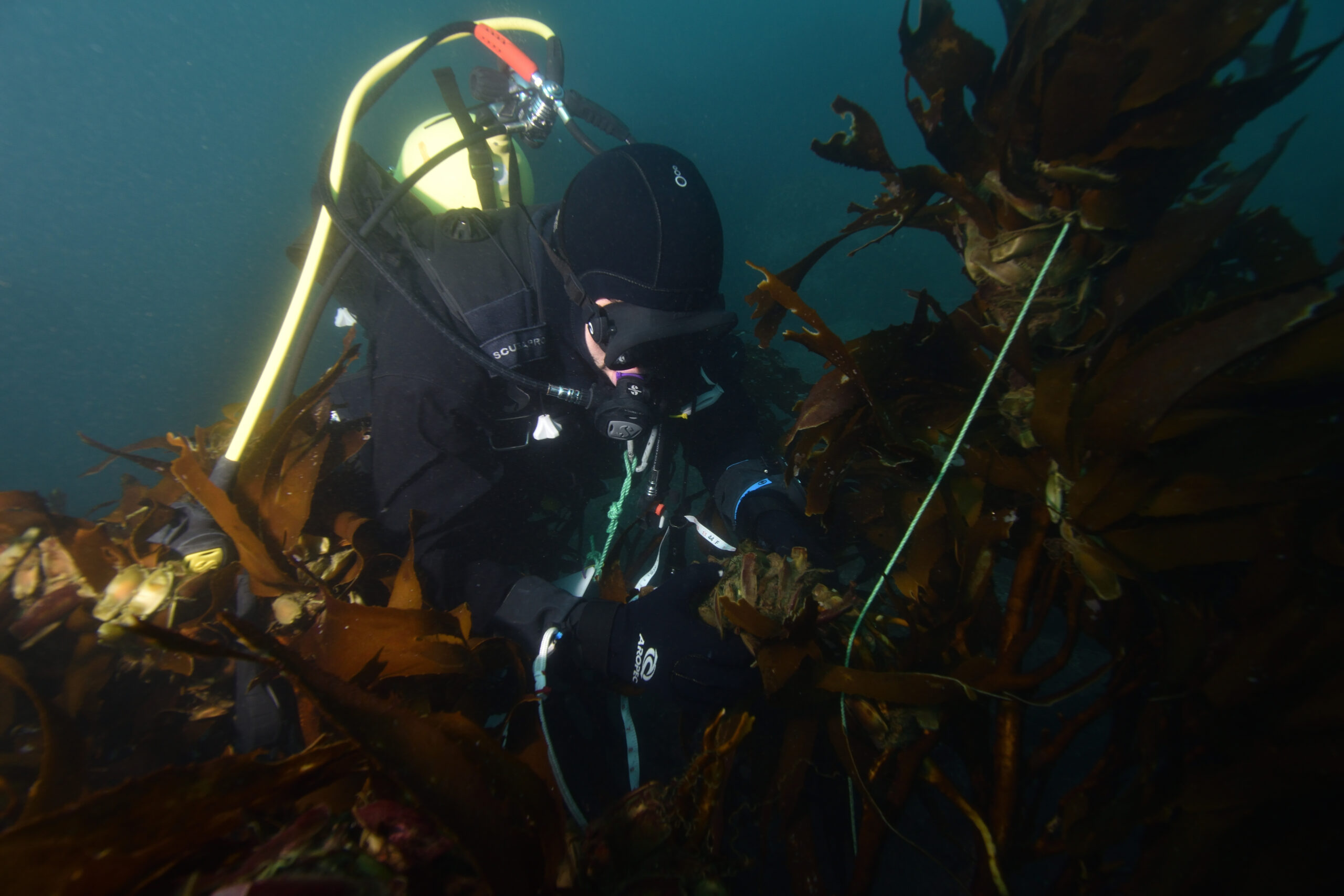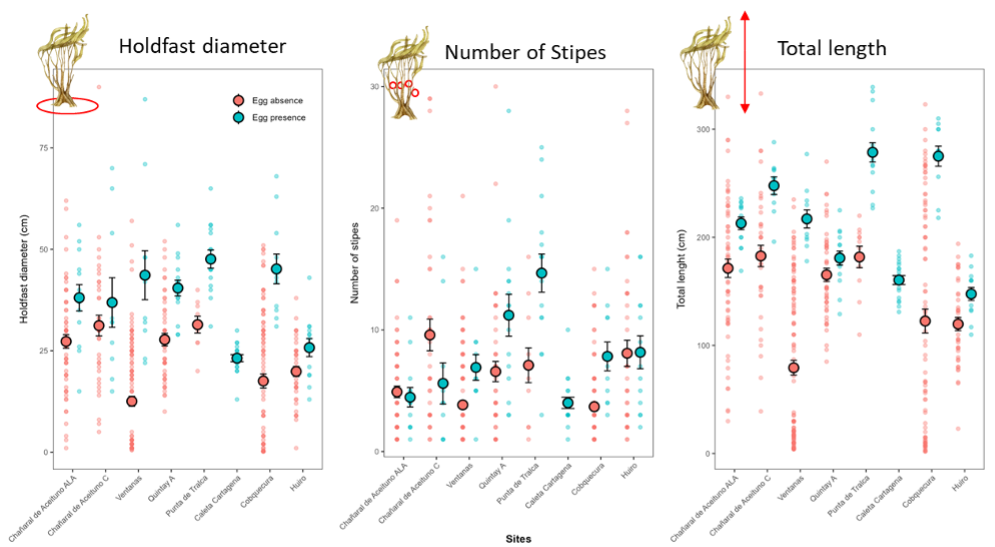Because size matters: what we have learned about shark nesting sites
My biggest concern in this project is to understand how changes in the size structure of kelp forests could affect the use of kelp as a nesting substrate for elasmobranch species in Chile. Therefore, we set out to monitor as many nesting areas as possible along the Chilean coast to observe if there was a morphological variation in the kelp used as a nesting substratum and the forest configuration for the elasmobranch in Chile.

Ready to count eggs in the locality of Punta de Tralca, Chile, an important nesting site for elasmobranchs. Photo © Nicolás Acuña
We embarked on an expedition to explore as many potential nesting sites as possible, from the sun-drenched, productive waters of Chañaral de Aceituno in the north, all the way down to the chilly embrace of Caleta Huiro near Valdivia in the south (as you can see in Figure 1). Our primary focus was the charmingly named red-spotted catshark (Schroederichthys chilensis), a species we hoped held the key to understanding this intricate relationship. We conducted monitoring at higher latitudes without success in finding nesting areas, even though these latitudes were within the species’ distribution range. However, local divers in the locality of Pisagua (S°19.6) have found a nesting area in a small bay named Junin (Hurray!) (Figure 1). We hope to monitor this nesting area to complete the distribution map of red-spotted catsharks in Chile. In total, we successfully visited 8 healthy nesting sites along the Chilean coast.

Figure 1. Our map of the places where we successfully record a nesting site within the kelp forest. Junín is our last point to visit.
As the data started to trickle in from our various sites, a clear pattern began to emerge. The central and south-central regions of Chile appeared to be the hotspots for red-spotted catshark nurseries, with nesting sites becoming increasingly scarce as we moved north (hence the dense cluster of markers on our map between latitudes S°32 and S°33). Interestingly, the elusive rays of the genus Sympterygia proved to be much more discreet in their nesting habits, with only two confirmed locations – Caleta Cartagena and Las Cruces – compared to the more numerous catshark sites. However, an important detail surfaced: we found eggs of both rays and sharks on the same kelp, suggesting a similar substrate preference for these species.

Counting eggs on kelp could be arduous, especially when there are more than 100 of them! Photo © Nicolás Acuña
Turning our attention solely to the red-spotted catsharks, we began to notice some relevant preferences. Within a given kelp forest, the nesting activity wasn’t scattered randomly. Instead, we consistently found dense concentrations of eggs clustered together on several neighbouring kelp plants within the kelp forest. It was as if the female catsharks had a silent agreement. They seemed to actively seek out areas where other eggs were already present, shunning the solitary kelp stands further afield.

We measure kelp size with and without egg presence. Sometimes kelp can be bigger than the diver themselves! Photo © Alejandro Pérez Matus
Females showed a greater preference for anchoring eggs to kelp with larger holdfasts (bases), more stipes (branches), and greater total lengths within the same forest (Figure 2). This indicates that, for female redspotted catsharks, size does matter when choosing where to lay their eggs. For example, kelp smaller than one meter was never used, despite being present at the study site. Large kelps with more stipes create greater substrate complexity, providing a larger surface area for laying eggs and greater protection against predators.

Figure 2. Hold fast diameter, number of stipes and total length measured in kelp with (blue) and without (red) egg presence in the different sites visited.
This preference for larger kelp extended beyond individual plants. We discovered that kelp forests characterized by generally larger individual kelp also tended to host a greater number of eggs per plant (as shown in Figure 3). Interestingly, we did not find a relationship between the number of kelps in a forest and the number of eggs per kelp. Surprisingly, however, we didn’t find a direct link between the abundance of kelp in a forest and the number of eggs found on each plant. It seemed quality, in terms of size, trumped quantity.

Figure 3. Relationship between the number of eggs in each kelp and different components of the kelp forest. There is also a negative relationship with Kelp crab abundance (the main predator).
Finally, we found that in forests with a higher abundance of egg predators in the kelp forest, such as the kelp crab, there was a lower number of eggs per kelp (Figure 3). This highlighted the critical importance for the female catsharks to select the most secure nesting sites. A well-chosen kelp, large and complex, could offer a vital refuge against these voracious crabs.
In summary, we have found exciting patterns that will allow us to provide relevant information for management plans for kelp harvesting activities in Chile, which will help conserve our elasmobranch species. The next step was to understand why red-spotted catsharks prefer specific kelp sizes. Some hypotheses suggest that a larger kelp allows for greater aeration of the eggs, better protection from predators, or simply a larger surface area for creating nests. Whatever the reason, elasmobranchs need kelp to maintain their populations, and it is our duty to protect these habitats that enrich the coasts of Chile and the world.
